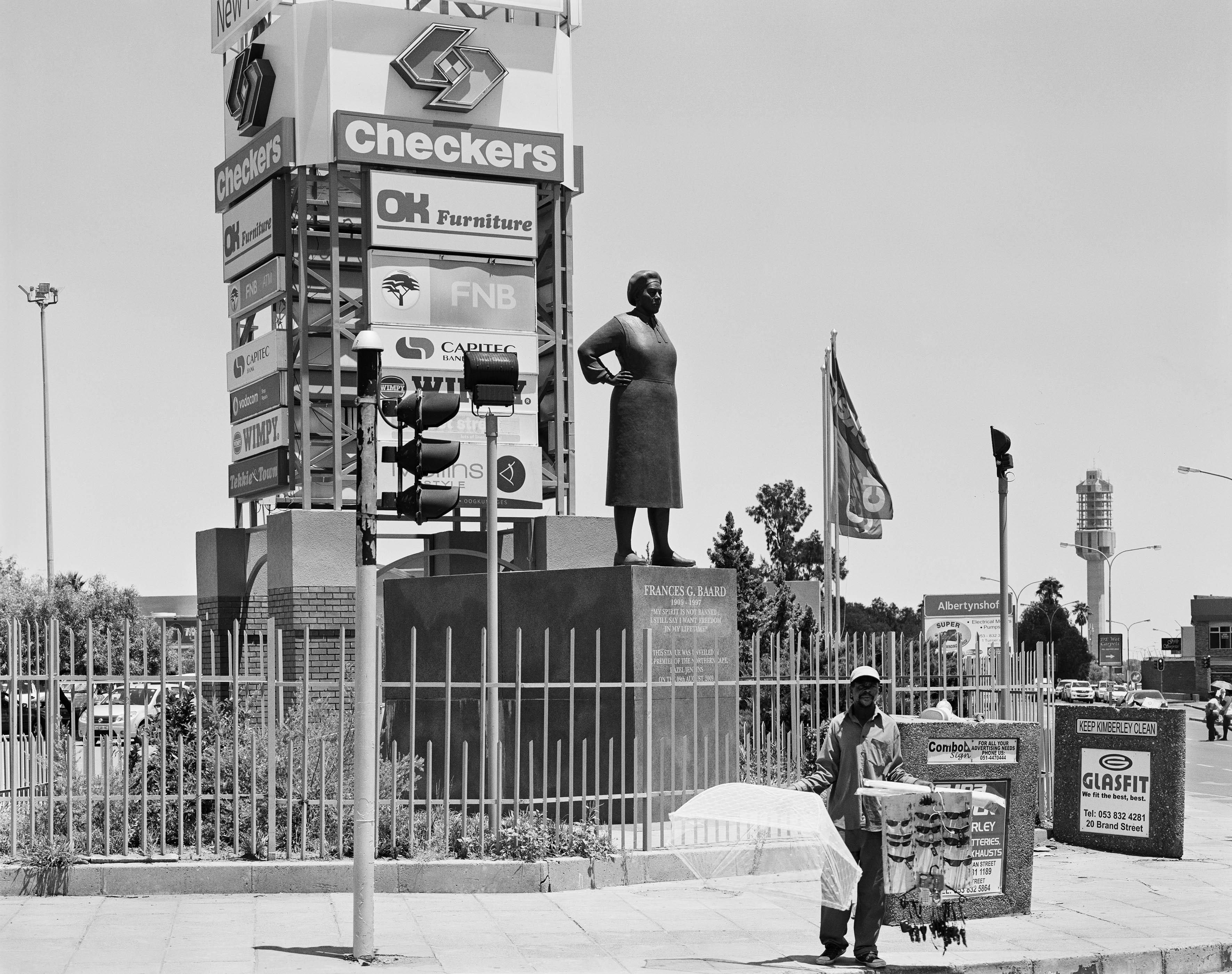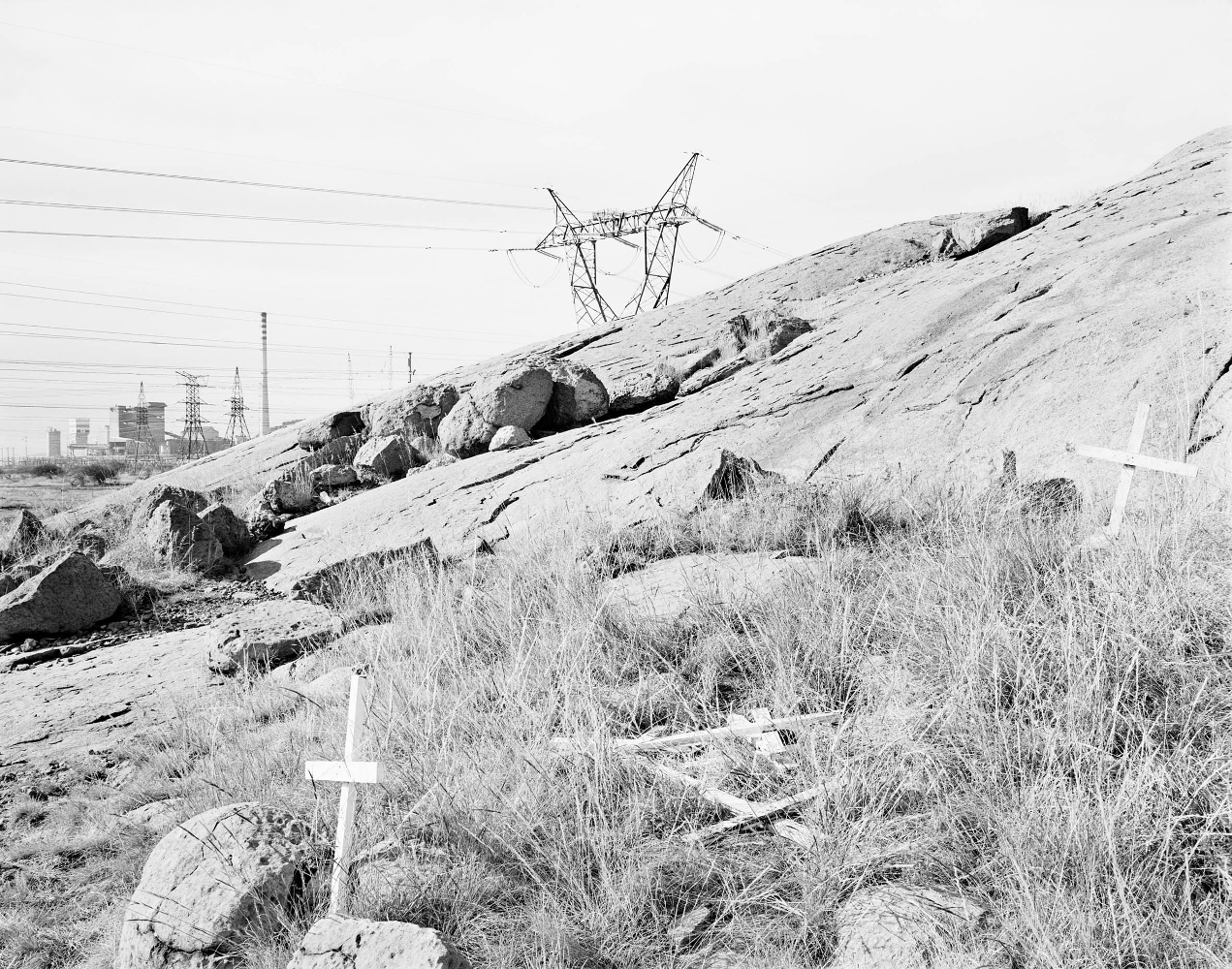Photographer David Goldblatt’s landscapes are elegiac
A restless sense of documentation drives David Goldblatt. Like those earliest colonial adventurer-explorer-writers of Southern Africa, wide-eyed to the differences of the worlds they encountered, our master photo-grapher has stubbornly traipsed the landscape to look, reflect and record “structures”.
It’s been much of a life’s obsession for the soon-to-be 84-year-old. And his open-ended visual essay about the things humans put up in nature, and the places around them – specifically those constructions and configurations South Africans contrive in their environment – has the urgency and urge of a scientist trying to understand and the obligation of an artist to portray.
In his latest exhibition, Structures of Dominion and Democracy at the Goodman Gallery in Cape Town, it is clear that Goldblatt won’t let up. Once again the geography surveyed by his travelling lens is the wide and woeful land. But, as the title makes clear, his appraisal is charged with the current moment in history. Where previous parts of Structures focused on the disparities, often the obscenities of power vis-à-vis the realities and lay of the land, this series navigates the places and spaces of transformation since democracy.
Where previously memory and history were strong, but underlying threads in the narratives of his pictures of buildings and edifices, the new work (and some older pictures, providing context) takes up memorisation and commemoration as a main theme. Many monuments are photographed, obviously with a twist. Known for the simple, neutral clarity of his sometimes long captions –often vital, but also enforcing a kind of field reporter’s unbiased position – Goldblatt does not play the superficial irony game.

A touch of humour
That didactic is for the viewers to engage with. Next to Cows at a taxi rank on Error Street, New Doornfontein, Johannesburg. December 8 2012, he comments: “In a city not known for the respect shown to its structures, these sculptures by Andile Maswangelwa, installed in 2008, were pristine in 2014.” That touch of humour is frequently used both in caption and visual to draw attention to the paradoxes of South Africa 20 years down the line of freedom, how it manifests itself in those structures, whether totems of wealth and power or simple man-made environmental arrangements.
A heap of stones and metal of a collapsed elephant sculpture by Andries Botha is a monument to petty politics and the underbelly of poverty. Photographed from that particular viewpoint, the smooth bronze mannequin of Frances Baard on a corner in Kimberley seems more caricature lost in commerce than meaningful leader. A cityscape, foregrounded by pavement rubble, has a self-explanatory caption loaded with contradiction: The City, the Firewalker and the aftermath of copper cable theft. Queen Elizabeth bridge, Johannesburg, December 29 2011.
This photograph, showing the Kentridge-Marx public artwork, is, like all Goldblatt’s imagery, a study of formal composition. His linear construction of lens images is pure pleasure of geometry, without letting the viewer in on the obvious. Often his tightly cropped city- and landscapes contain visual narratives that extend on all sides of the captured image. This is a masterful key to intrigue; one cannot but wonder about the why and wherefore.
‘The fault lines of the cultural status quo’
In monuments, built as markers to recall, to honour and to contemplate, this engagement should be vital. A major part of this show is dedicated to monuments, and it’s in his pictures of these that Goldblatt gently demonstrates the fault lines of the cultural status quo. But if the incongruities and irony are the viewer’s to negotiate, the photographs themselves have a definitive power about them too. One might even say monumental.
The most commanding photograph on this show – perhaps for obvious reasons – is Marikana, North West Province. May 11 2014. The outline of the sharp, steep angle of the slippery koppie, bare and rocky, cuts dramatically through the picture at 45 degrees. It tilts one’s eye and mind. It leads to the foreground where African grass mixes with white crosses, some standing, others abandoned. Then the eye takes in the distance where, beyond power lines, resembling boundaries, is the “Lonro smelter, which stood idle during the strike”. A large, high-voltage pylon is central, echoing the tiny markers of death in front.

Without reading Goldblatt’s factual caption, this visual presentation sums up the tragedy: the main players, present and absent; the symbols of clashing power and belief; the uncompromising theatre of the natural Africa as a washed-out landscape. The elegiac silence is all powerfully visible.
Structures of Dominion and Democracy is at the Goodman Gallery, Cape Town, until December 6